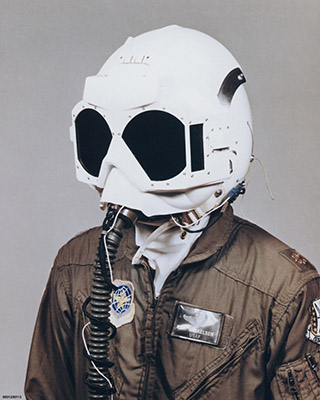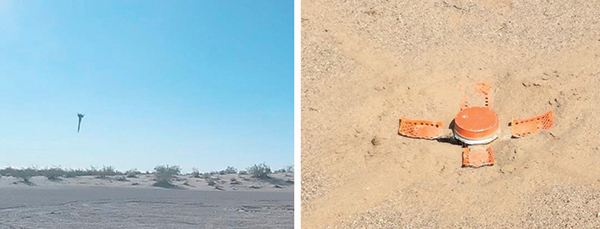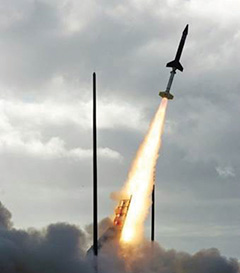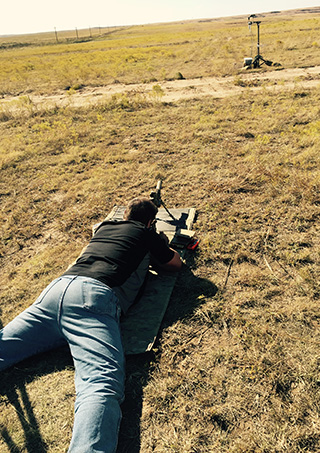
Thermal/flash protective device goggles.
Center 1800 developed effective mitigation approaches for aging-related issues of pilot protection goggles under an Air Force Materiel Command Air Force Life Cycle Management Center work for others agreement. The electro-optic PLZT thermal/flash protection goggles, originally developed by Sandia from 1971 to 1986, were found to be refurbishable using Sandia experience in materials aging, electronic materials development, optical materials, and electronics packaging and encapsulation. (1800) DSA, SDF
The Sensor Exploitation Applications department has delivered several new target models that expand the capability of the F-35’s Synthetic Aperture Radar targeting system. Sandia continues to work with Northrop Grumman and Lockheed Martin to expand this capability. Sandia has led research and development of Synthetic Aperture Radar Automatic Target Recognition (ATR) technology for 25 years. Sandia’s ATR is sought by both DoD and defense contractors because of its software maturity, processing efficiency, and decision accuracy. (5400) DSA, SDP
Testing Sandia’s Sensor Delivery Dart

Sensor Delivery Dart in flight and successfully embedded to terrabrakes following impact.
Last summer, organizations 5447, 5422, 5431, 5435, and 5448 supported a field test of Sandia’s Sensor Delivery Dart (SDD) system at a test range near Yuma, Arizona. Twelve SDDs were dropped from an aircraft to test aerodynamic and ground penetration performances. All 12 SDDs performed exactly as predicted. The customer was extremely pleased with this first set of results, produced within seven months of the project start. Two additional and successful test series were performed later in the calendar year. (5400) DSA, SDP

The FTM-25 ARAV target vehicle being launched from KTF Pad 1.
Flight Test Standard Missile-25 (FTM-25) was successfully conducted Nov. 6, 2014. A ballistic missile launched from Sandia’s Kauai Test Facility and two cruise missiles were detected, tracked, and engaged by the destroyer USS John Paul Jones. This test was the first live-fire event of the Aegis weapon system in Integrated Air and Missile Defense Radar Priority Mode, engaging a ballistic missile target and a raid of cruise missile targets. In addition to launch operations, KTF provided telemetry, target displays, countdown, photometrics, and other range support. (5400) DSA, SDP

Sandia has demonstrated success in developing a capability to measure the downrange crosswind for long range shooting. Until now, crosswind estimation relied exclusively on the judgment of highly trained and experienced snipers. An affordable hand-held or rifle-mounted technology has been demonstrated at our outdoor optical test range and live-fire testing with special operations snipers. Funding is being provided by various interested defense forces. (5300, 6500) DSA, SDP

A Sandia-developed analysis capability was one of six finalists for the 2015 Franz Edelman Prize. Over the past four years, the Capability Portfolio Analysis Tool (CPAT) has been used in more than 40 high-visibility studies to inform the Army’s Program Executive Office Ground Combat Systems’ fleet modernization decisions. CPAT’s nomination highlights the tool’s technical excellence and the impact it has had on the Army’s modernization planning. CPAT analyses have helped prioritize the investment of billions of taxpayer dollars planned over the next 25-35 years. (6100, 9500) DSA, SD